SAS is still alive and somewhat well. In terms of the industry, we know all of the all-flash arrays are trending toward NVMe-based storage. Hyper-scalers are also all-in on NVMe SSDs. Still, for some enterprise buyers who want to stick in a traditional enterprise server model with in-chassis RAID controllers and storage, then the new Kioxia PM6 is here using 24G SAS or SAS4 technology.
Kioxia PM6 SAS4 SSDs
Starting with a bit of background here, while SATA has effectively reached a dead-end at 6Gbps SATA III generation technology, SAS has pushed ahead. We have had 12Gbps SAS3 in the market and widely available for well over half a decade now. Since then, the performance market has largely moved to NVMe SSDs and now exotic technologies such as Intel Optane DCPMM and soon NVDIMM-P’s. Still, the industry moves on.
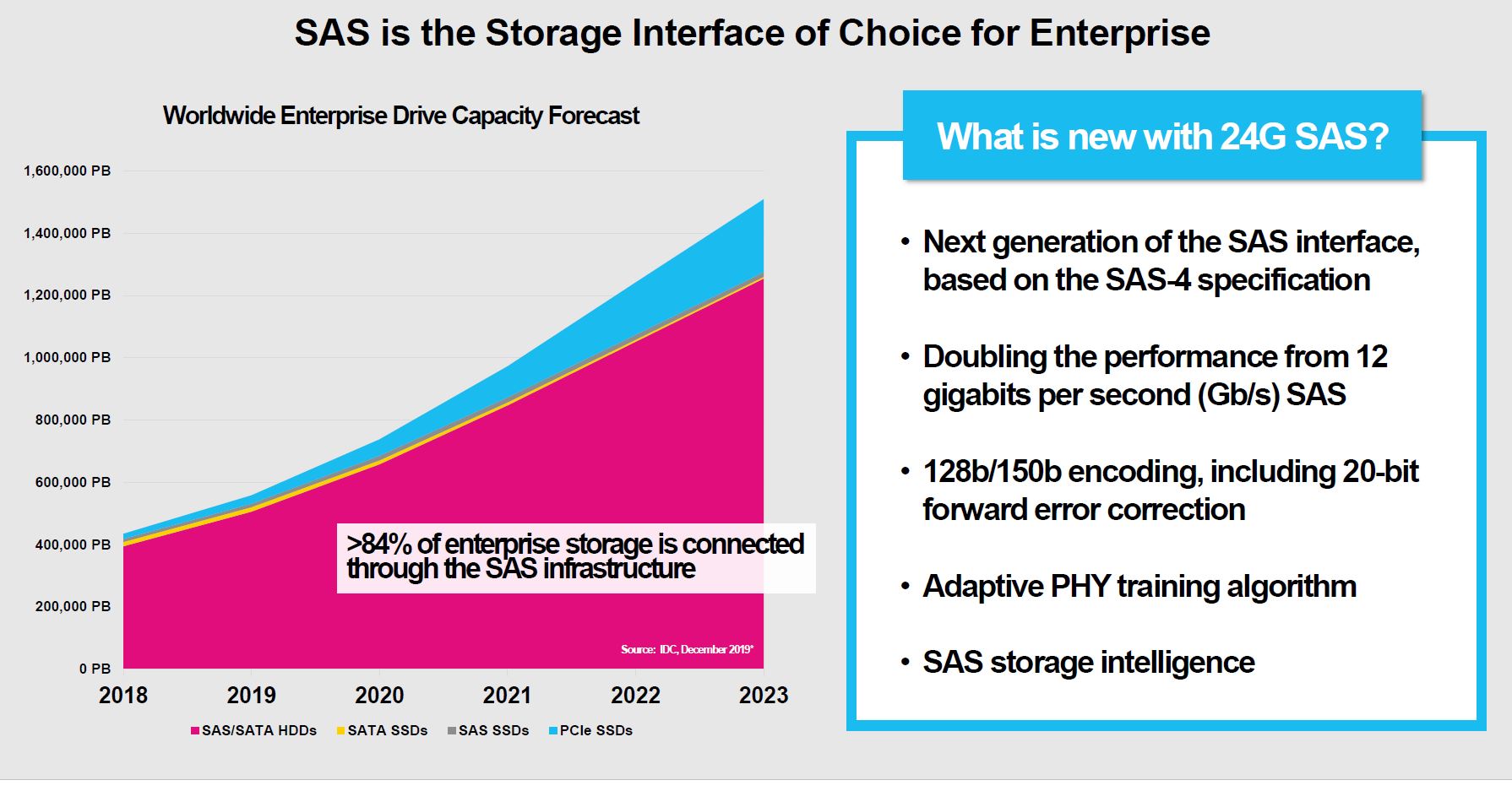
SAS4 uses a more efficient encoding scheme and 20-bit FEC to double bandwidth from 12Gbps SAS without actually doubling the line rate. Technically, 24G SAS4 is more like 22-23Gbps. This is very similar to how PCIe Gen2 to Gen3 changed encoding and doubled effective bandwidth without doubling line rate.
The chart above is fascinating. It is not based on units shipped. Instead, it is capacity based. The Pink bar is hard drives. As we expect, hard drives will continue to be bulk storage so that market will grow but technologies such as QLC and future NAND advancements will take incremental share. Likewise, PCIe (NVMe and future) SSDs will continue to gain share. Architectures get different in late 2021/ early 2022 with PCIe Gen5 and CXL which is why we are seeing an uptake there as well.
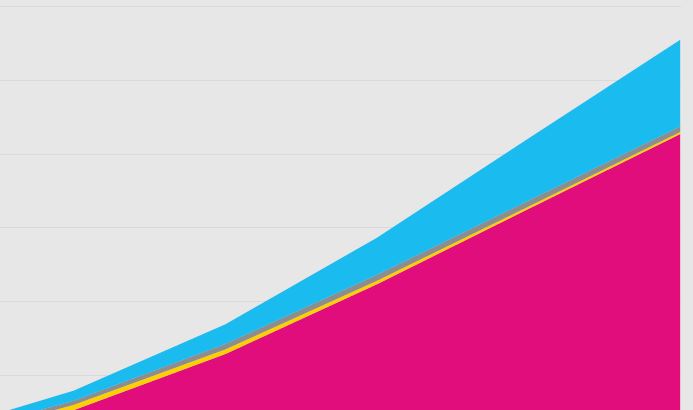
We zoomed in on the chart. Yellow is SATA SSDs. Grey is SAS SSDs. Many are still buying enterprise SAS because that is what they have done for generations. If you are buying enterprise SAS3/4 SSDs to run on a RAID controller in your server, just realize that you are buying into the ecosystem of that thin grey line. Server vendors (and Broadcom) will be happy to oblige, and that is why we have the Kioxia PM6 SAS4 SSD and SAS SSD infrastructure going forward.
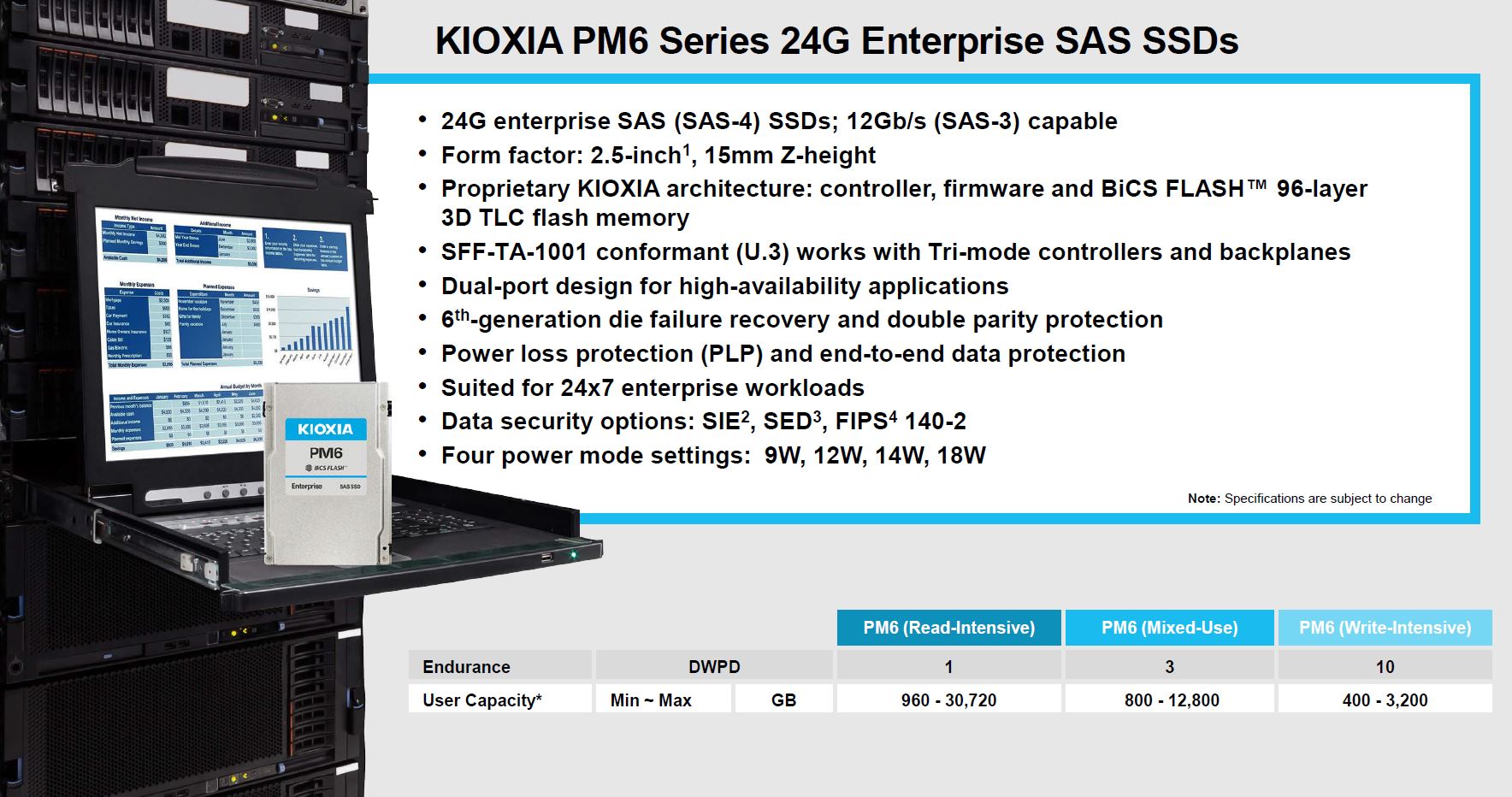
The Kioxia PM6 SSDs come in 1, 3, and 10 DWPD flavors for read, mixed, and write-intensive workloads respectively. They utilize the new U.3 connections to work with controllers that can also interface with NVMe SSDs. That also means they can work on existing 12Gbps SAS3 and U.2 infrastructure. One of the major benefits is that these are dual-port drives so they are not like the Kioxia RM5 value-SAS series. One can utilize these new drives in high-availability arrays.
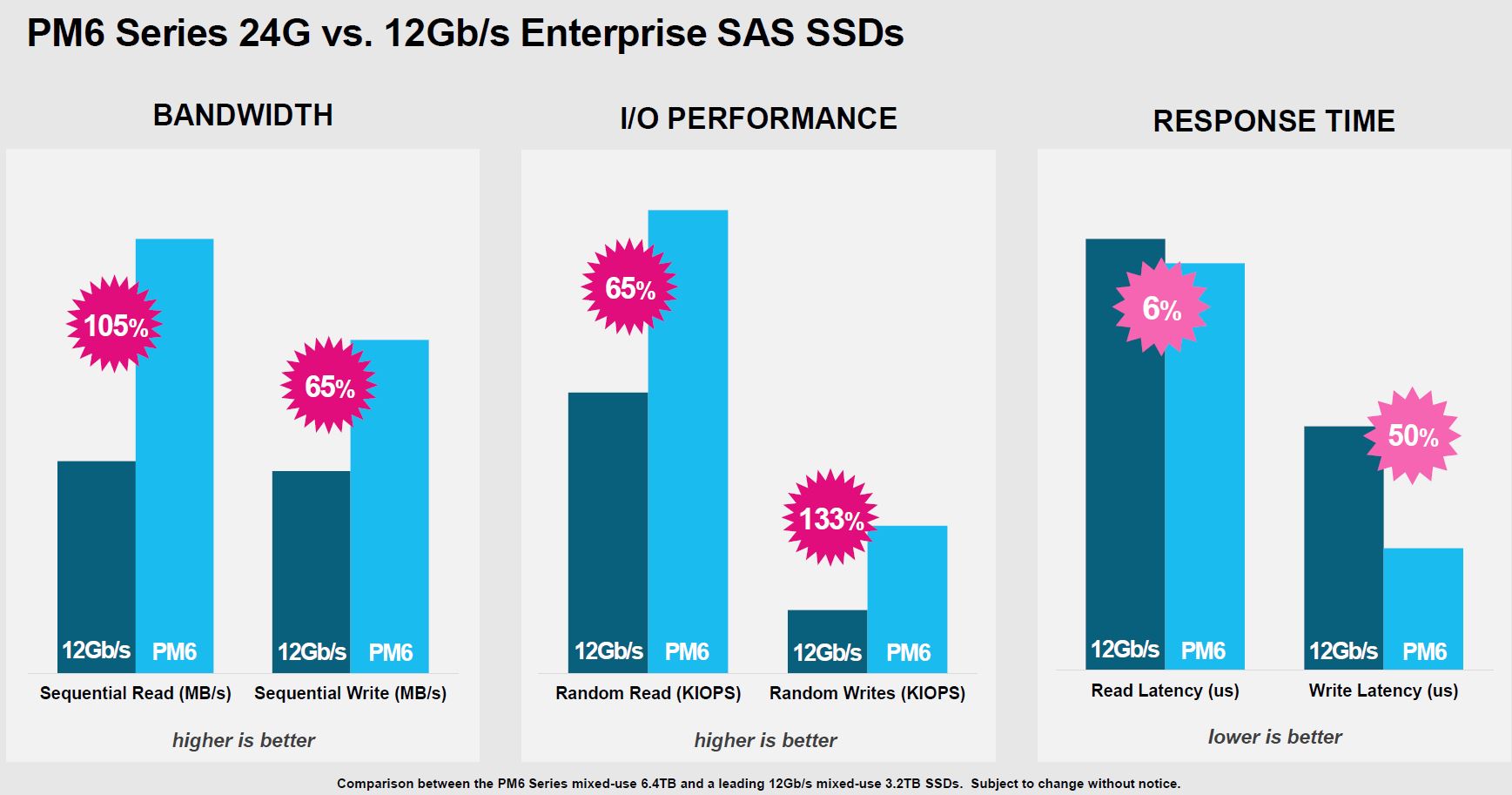
The new drives have read speeds of around 4300MB/s read. The read latency is not improving as much due to different NAND technologies. Still, in other areas there is a major gain. We should note here that Kioxia is comparing their results to a SAS3 competitor drive, that they are not disclosing the model of. Still, with twice the effective bandwidth, the SAS4 drives can increase speeds. The SSDs themselves are getting much faster since they are now being designed for higher-speed PCIe Gen4. Kioxia has PCIe Gen4 drives in the CM6 and CD6 that share some of the same underlying technology.
Final Words
This is one of those segments where if you are a STH reader you have two choices. The SAS4 Kioxia PM6 path is exciting in that it can work in SAS3 infrastructure and it can also continue providing performance gains to the next SAS4 generation. One of the other nice features is that one can use the PM6 drives alongside SAS/ SATA hard drives on older SAS3 generations so it provides some nice backward compatibility.
At the same time, Kioxia’s interface and capacity market share chart clearly shows a trend. If you are using this drive, or a SATA SSD, you are effectively using an, at best, third place technology. That statement may hit hard to our readers that love LSI/ Broadcom RAID, but for SSDs, the transition to NVMe is already eclipsing SATA and SAS SSDs combined. That is a trend set to continue. For those who need a future upgrade path, but do not want to use more modern infrastructure components, then the Kioxia PM6 is set to deliver substantial performance gains.

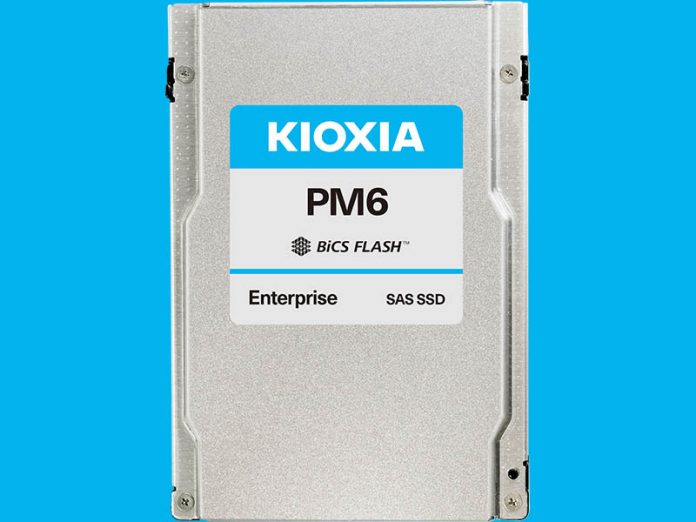

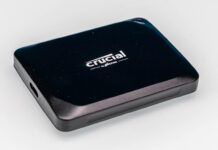

Are there any Broadcom RAID or HBA 24G controllers that are known to work with PM6?